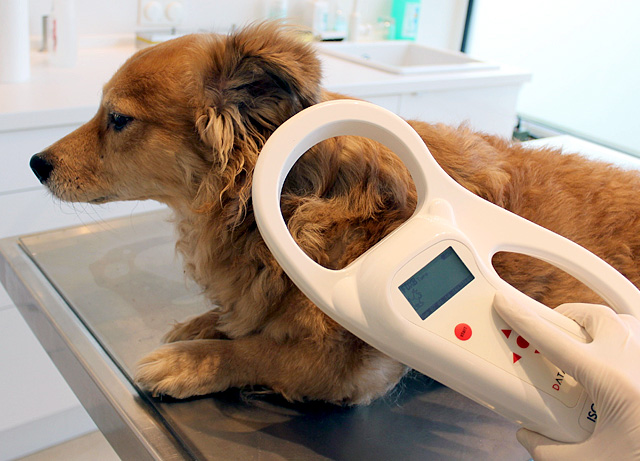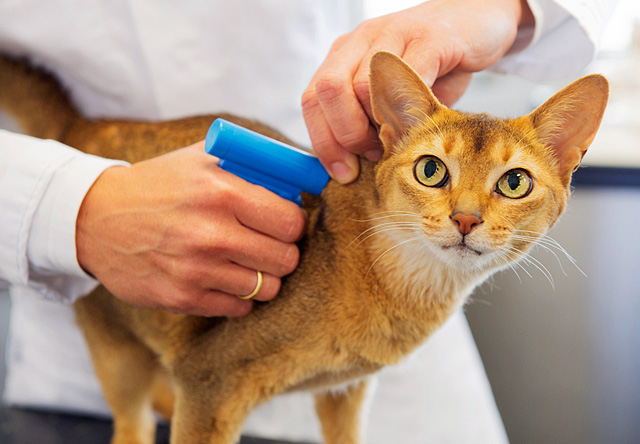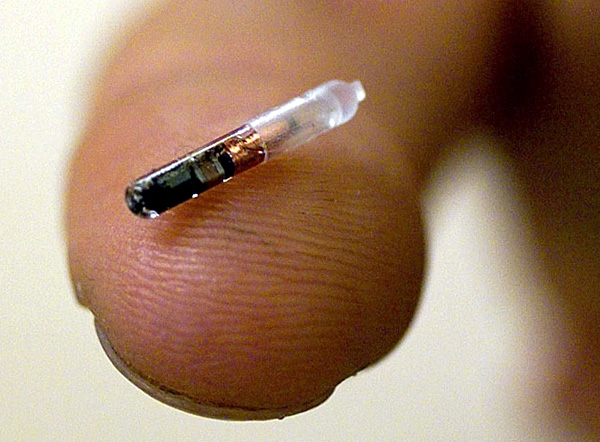Microchipping Your Pet
What is a Microchip and How Does it Work?
Getting your pet microchipped is an easy and relatively inexpensive procedure that drastically increases the odds that your pet will find its way home if it’s ever lost. A microchip is a tiny chip that’s about the size of a grain of rice and contains a unique identification number. It’s injected into a pet’s skin between the shoulder blades on their back. When scanned with an electric scanner, the chip will show the unique identification number and manufacturer of the microchip. This unique identification number will be linked to the pet owner’s contact information in the microchip manufacturer’s database.
If a stranger ever finds your pet, a shelter or veterinarian can scan your pet for a microchip. Once they have the identification number and manufacturer from the chip reading, they will call the manufacturer in search of the pet owner’s contact information. Therefore, if a pet owner moves or changes their contact information, it’s extremely important for them to update the contact information associated with their pet’s microchip identification number.


How to Get Your Pet Microchipped
Your veterinarian can easily microchip your pet right at the office. It’s a quick and easy procedure that’s very similar to a vaccination injection. The average cost is about $50 and the chip should last a lifetime. However, sometimes a chip can move around or even work its way out of your pet, so it’s important to periodically have your vet check the microchip to make sure it’s still in place.
Checking Your Pet’s Microchip
If your pet was microchipped a few years ago, National Chip Your Pet Month is the perfect time to make sure your contact information is current in the chip manufacturer’s database. It’s also a great time to make sure your pet’s microchip is still in place. Although the chips do not expire, they can sometimes move around, making them harder to find. Your vet can easily check whether or not your pet’s microchip is in working order during their next visit with a quick scan.
FAQs
There’s absolutely no medical downside to microchipping your pet! The only potential negative is that sometimes they can move around and need to be replaced.
Absolutely. All scanners are universal and can read any chip from any manufacturer. As long as the chip is still in place and the associated contact information is current, there’s no need to replace a chip.
Yes! A microchip should never replace your pet’s identification tags. A microchip should act as a backup in case your pet’s tags become detached. ID tags make the process of finding pet owners much faster and easier. Also, the person who finds your pet may never take them to a shelter or vet to be scanned for a microchip. So, if they don’t have tags, your pet could be rehomed before anyone checks for a microchip.
Any veterinarian or animal shelter can easily scan an animal for a microchip. If you find a stray animal without ID tags, it’s always best to have them checked for a microchip at your vet or a local shelter before deciding to keep or rehome them.

